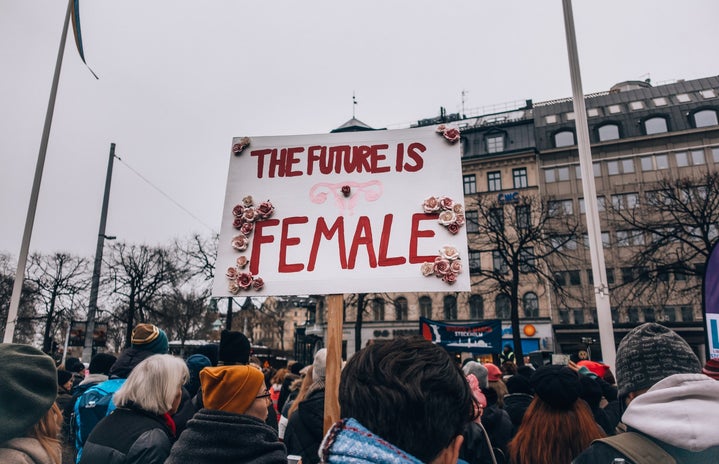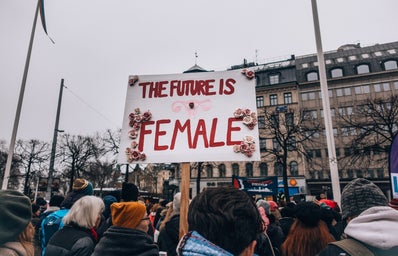Wednesday 8th March marked International Women’s Day, an annual celebration of the political, social, economic and cultural achievements of women around the world. International Women’s Day is both a celebration of progress in gender equality and a reflection of what is yet to be done to achieve gender parity. The day offers an opportunity to educate and raise awareness of issues, both past and present, concerning women’s rights, fundraise for female-focused charities world-wide and is celebrated through a range of activities including campaigns, rallies, parties and fun-runs.
International Women’s Day was honoured for the first time on the 19th March 1911 by Austria, Denmark, Germany and Switzerland following the 1910 International Conference of Working Women in Copenhagen. The conference saw Clara Zetkin, leader of the Women’s Office for the Social Democratic Party in Germany, propose an annual women’s day in every county. Zetkin’s proposal was met with unanimous approval, marking the start of International Women’s Day as we know it today. Initial celebrations in 1911 included rallies and campaigns in support of women’s rights to work and vote, calling for an end to gender discrimination. Two years later, Russia celebrated its first International Women’s Day on the 23rd February, which, when translated into the Gregorian calendar, became the official date of International Women’s Day, 8th March, for years to come. The day was recognised for the first time by the United Nations in 1975. Two years later, the UN’s general Assembly proclaimed a “United Nations Day for Women’s Rights and International Peace” to be observed by Member States in line with their own traditions. After the turn of the new Millennium, an online platform for International Women’s Day was created to raise more awareness of the campaign among the masses and encourage collective action. The website, continuing today, provides resources and information on the annual campaign including its history, fundraising activities, ways to celebrate and general guidance. In more recent history, the campaign celebrated its centenary in 2011, when Barack Obama proclaimed in March a “Women’s History Month”, evoking a nationwide reflection on female accomplishments in shaping modern America. In the past decade, International Women’s Day has continued to develop into a mainstream celebration, supported by charities and businesses across the world as a chance to show support for women’s rights and gender equality.
Since 1996, International Women’s Day has placed emphasis on a particular theme each year, with this year’s global campaign theme being “embrace equity”. The official International Women’s Day website defines embracing equity as the means to “deeply believe, value, and seek out difference as a necessary and positive element of life. To embrace equity means to understand the journey required to achieve women’s equality.” With the official slogan of the campaign reading “why Equal opportunities aren’t enough!”, this year’s campaign calls into question the difference between equity and equality, hoping to spark a worldwide conversation about the differences between the two words; equality refers to each individual receiving the same opportunities whereas equity recognises that each person has different circumstances and allocates specific resources and opportunities needed to reach an equal outcome. The campaign aims to highlight how equal opportunities rather than equity can in fact be exclusionary rather than inclusive. This year’s theme is of particular significance to female students entering the workforce who need to recognise that sometimes women require more than a level playing field, but need to, as quoted by the official campaign, “belong in a global culture that actively promotes and supports them in all aspects of their life, from education to the workplace to health”. Significantly, a shift from equality to equity acknowledges differences in opportunities between women, recognising that policies benefiting white women might not necessarily benefit women of colour. The message from the campaign is clear- equal isn’t always fair. Thus true inclusion requires equitable action.
International Women’s Day has revolved around numerous themes over the years, engaging with a range of issues affecting women’s rights, such as ending violence against women and breaking gender bias, and has witnessed huge advances in women’s emancipation. Whilst these advances should not be downplayed, there is still a long way to go to overturn the patriarchy that has been too long entrenched within societal practices and structures. The entry of women into the boardroom has exposed the extremities of the pay gap- how women are outnumbered in business and politics and the negative stereotypes attached to businesswomen compared to their male counterparts. Whilst a large part of International Women’s Day looks to the past, celebrating and honouring women and how far women’s rights have come, the day is also an opportunity to reflect on the present and to consider what needs to be done to achieve what women envision for their future


